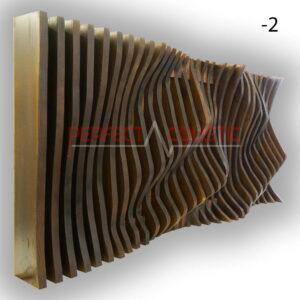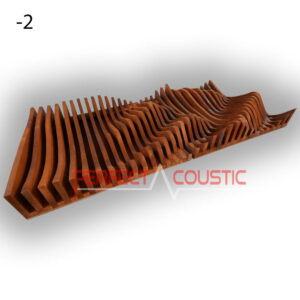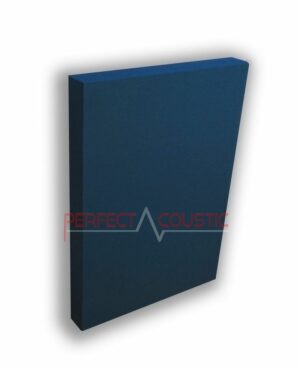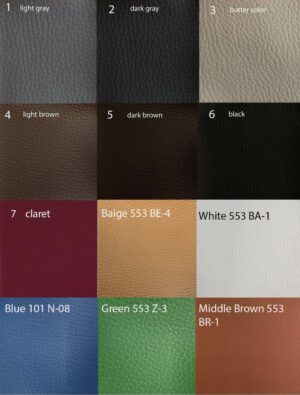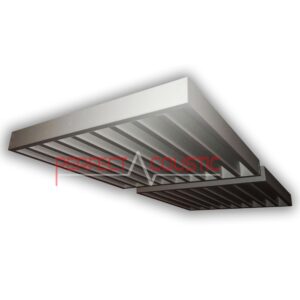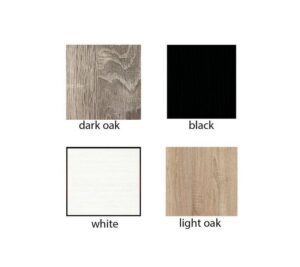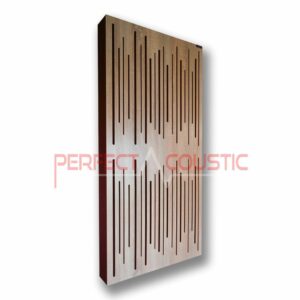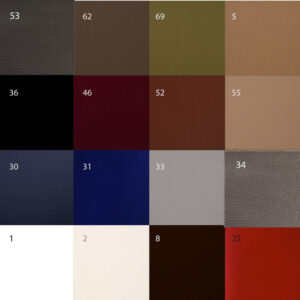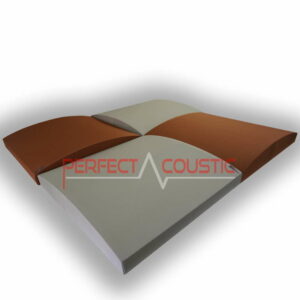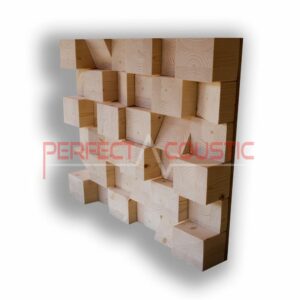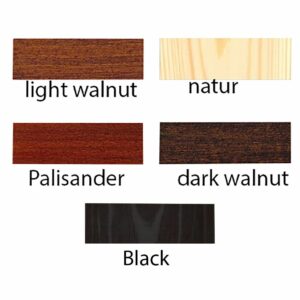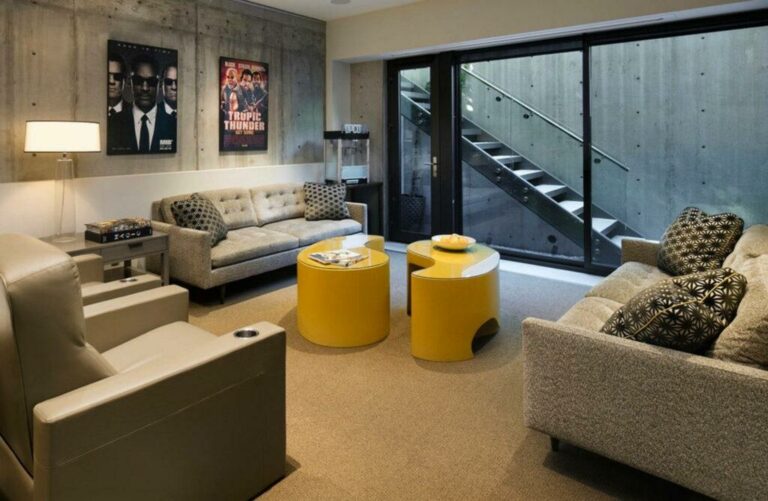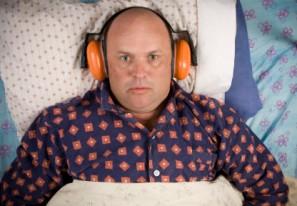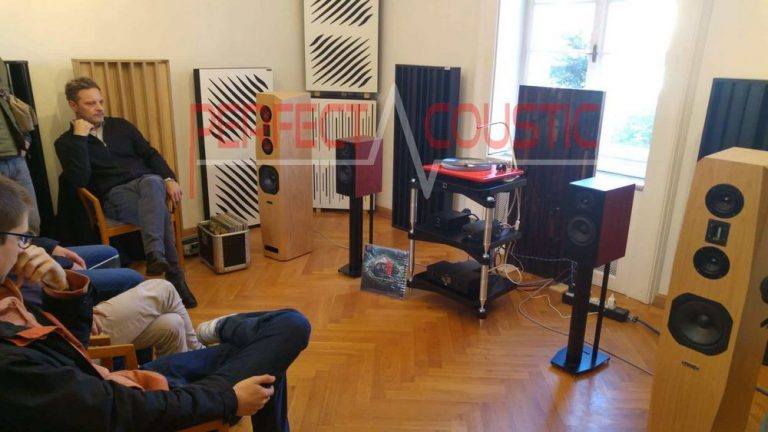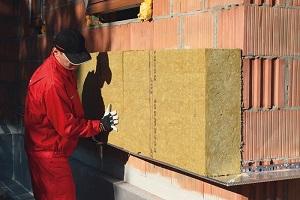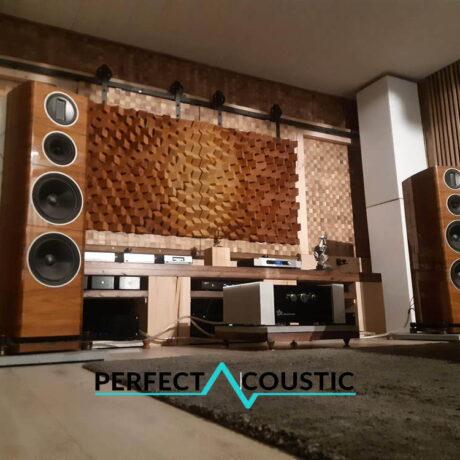What type of speaker should we choose?
Before buying a speaker, it is useful to find out about the types of speakers, their performance, and their goods. The most important considerations to consider are what and where we want to use these audio devices. The performance of the speakers should be adapted to the size of the room available to us. It is also important what acoustic features the room or studio has. It is strongly recommended to perform an acoustic measurement and, if necessary, treat the room with the appropriate acoustic elements. Even if we buy the best speakers, if the acoustics are not ideal, unfortunately, we can not enjoy quality sound.
-
Parametric Wall Art Panel (Diffuser)327 € – 426 € +Vat
-
Bass acoustic wall panels with double leather membrane83 € – 260 € +Vat
What are the factors to choose a speaker?
- The misconception is that the bigger and more expensive a speaker, the better sound can be achieved with it! Size is not the point!
- Buildability or portability must be considered.
- We want to achieve multi-channel or stereo surround sound.
- The selected speaker has a wireless or wired connection.
- The type of speakers and the sound effect they provide is important.
- The lifespan of audio devices also depends on home maintenance and cleaning.
- For speakers, be sure to consider the sensitivity, which is usually specified by the manufacturers in decibels. A higher value means higher sensitivity, which means a higher volume can be achieved with less power.
Bluetooth speakers
For Bluetooth speakers, the saying is “little and good”. These speakers can be easily carried with you, connected to a phone or other device. Battery performance should be as high as possible. Fuller, deeper sound can be provided by passive radiator speakers.
You can also listen to the radio or your favorite CD on the micro hi-fi equipment. It is worth buying a device with a power of more than 10 watts.
The soundbar or compact sound projector can be connected to a TV. The choice of sound projector type is affected by the screen size of the television. Wireless and wired variations are also available.
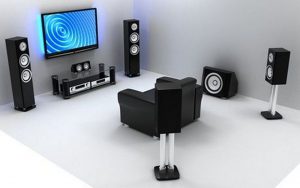
Home cinema systems are made up of several units, you can get real surround sound if you carefully follow the audio products available on the market. Instead of plastic membrane devices, we recommend aramid fiber membrane devices. 5.1 channel home cinema systems produce excellent sound, as thanks to the speakers in 5 different directions, we will have a 360-degree sound experience from all directions. We can also get compact home cinema systems, as this way we get everything ready, there is no need to select the units separately. However, they can have the disadvantage that when listening to music, they may not be able to provide the best sound quality.
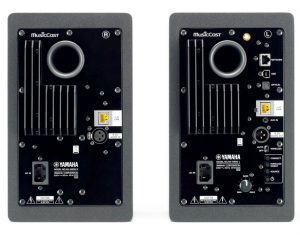
There are active and passive speakers. Active speakers also have a built-in amplifier. The most important factors to achieve surround sound are volume, intelligibility, distortion-free sound, and dynamics.
Let’s take a look at what speaker types to choose from!
1. Full frequency speaker
This type covers the entire soundtrack between 20-20,000 Hz. It is usually large, quite expensive, and, due to its size and weight, can only be placed on the floor. You can expect clear, rich sound quality from this type of speaker.
2. Speaker with limited frequency
It covers sounds in the range of 45-20,000 Hz. Its smaller size allows it to be placed on a stand.
3. Subwoofers
It makes very low-frequency sound waves perceptible. At 30 Hz we can already experience very good sound quality. Active subwoofers are now available with a built-in amplifier. So the speaker cable is short. The two most common types are the bass reflex, i.e. the tuned chamber subwoofer, and the closed box subwoofer. Reflex types are cheaper and louder, do not require a high-power amplifier, but are slower to respond and transmit less accurate sound. Closed box speakers (where the vibration of the diaphragms affects the sounds) require more power and a stiffer housing compared to reflex box types (where a reflex tube improves efficiency) to achieve the same sound pressure. They can broadcast accurate, clear deep sound, their disadvantage is the high price. For reflex tube systems, tuning also matters a lot. The deep sound of loudspeakers is also affected by their material, quantity, and diameter. The more and larger the diameter of the subwoofer in the room, the deeper the sounds you can make.
-
Grid diffuser133 € +Vat
-
Absorption panels with diffuser-Two in one62 € – 296 € +Vat
Home theater speakers
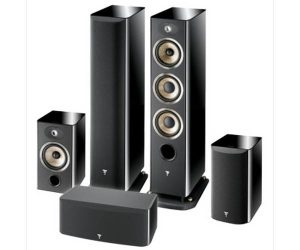
They consist of a set of five-channel speakers: 2 front, 2 rear (surround), 1 center speaker (responsible for clarity and clarity of dialogues, music, and sound effects), and a subwoofer. The best center speakers are three-way. When placed at ear level, they do not produce extinction. Indispensable elements of home theater systems, as in most movies, 70 percent of the sounds are transmitted by center speakers!
Useful information:
Loudspeakers usually indicate the value of frequency changes on products. Eg 50Hz- 25 kHz, +/- 3 dB. This means that the sound will be -3 dB at the specified frequency. (Sounds lower than 50 Hz cannot be used.) The 50 Hz in the example is the lower frequency limit for the speakers and the upper is 25 kHz. The lower the frequency limit, the deeper the speaker can emit. And the higher the upper limit, the higher the sound.
What is impedance?
Impedance is a unit of AC resistance, Ohm. Its value is not constant, it depends on the frequency of the frequency and its resistance to the instantaneous current. For most speakers, 8 Ohm resistance is the most common.
What material are good quality speakers made of?
Wood is the most suitable for making speakers, but it does not matter the type and quality of wood.
-The porridge is the cheapest but the lowest quality raw material.
-MDF is already better quality but less rugged than plywood. Recommended for building subwoofers, but less movable due to its high weight.
-Plywood is the most expensive, but at the same time acoustically the highest quality, very solid, strong material. Also suitable for professional use.
Deep tones and room size
It is recommended to adjust the type, size, and quantity of the speakers to the size of the rooms. It is very important where we place the speakers. Let’s take a look at some room sizes and the recommended speaker power, diameter..etc. (for a subwoofer)
-
3D Sound absorbing panels – Size: 60x60x10cm 3kg49 € – 59 € +Vat
-
Cubic Sound Diffuser 60x60x10108 € +Vat
Room size – Listening distance –Recommended sound pressure – Min. Amplifier power – Min. speaker diameter
70 cubic meters 2 meters 105 dB 50 W 15 cm
85 cubic meters 2.8 meters 113 dB 150 W 20 cm
115 cubic meters 3.5 meters 117 dB 250 W 25 cm
175 cubic meters 5 meters 123 dB 500 W 30.5 cm
250 cubic meters 6.2 meters 129 dB 1000 W 38 cm
Wireless speakers
The term “wireless” does not mean that there are no cables or wires at all. The name suggests that the speaker can be connected wirelessly to other devices, TV, telephone, tablet…, etc. However, the speaker can be connected to a power source via a cable, and a cable will be required to charge the battery. Some wireless speakers also have a connector that allows you to connect to an older type of wired device, e.g. old turntable, CD player..etc. A Bluetooth and Wifi connection is required for wireless connection. With the Bluetooth connection, you can connect two devices within a maximum of 10 meters. The sound quality is excellent, there is no need for internet either. In the case of Wifi, the distance between the given devices is not important, the sound is perhaps barely noticeably better compared to Bluetooth. The downside is definitely that if the Wifi connection is weak or disconnected, we cannot use it. SzG

